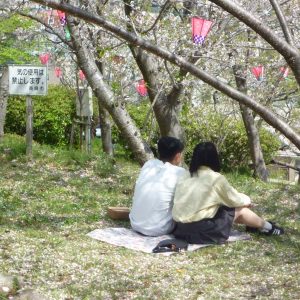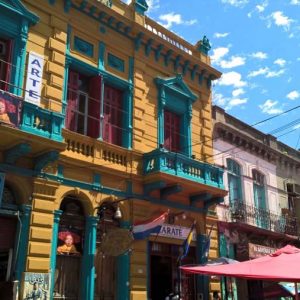Solange Hando shares three of her favourite places in rural France
Is the vaccine rekindling your travel dreams? I can’t wait to cross the Channel and rediscover the country where I was born. How about you? Looking for authenticity, scenery and culture in a safe location? Come along, and I’ll show you some lovely gems away from the madding crowds.
The Vosges Mountains in Lorraine
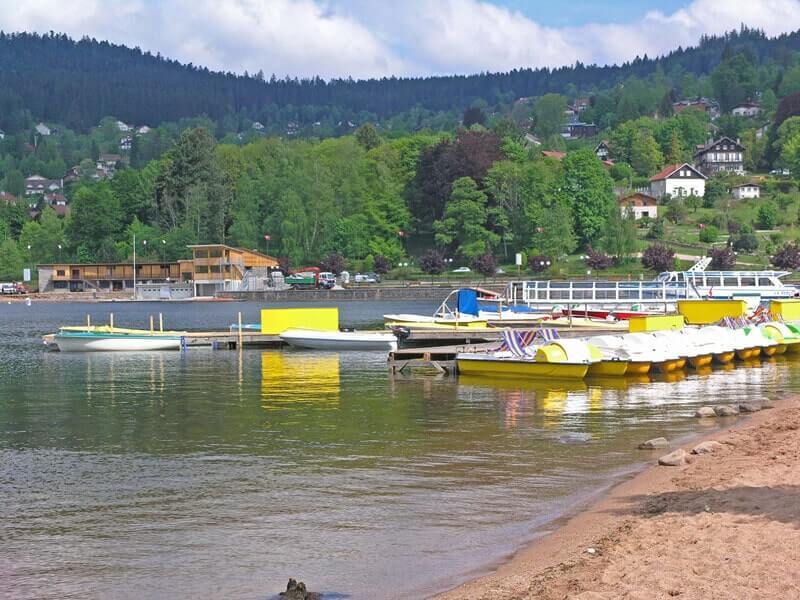 Lakes, forests and pastures, childhood holidays come flooding back when I return to Gérardmer, the ‘Pearl of the Vosges’ where I love to trek on nature trails or ski in winter. At 660 metres, the resort enjoys a buzz in season but for much of the year, it’s a quiet little place framed by forested slopes mirrored in a placid lake. You can swim, canoe or sail, but I like to ramble along the shore (6.5 km), breathing in the fresh mountain air and the lingering fragrance of conifers. Chalets are scattered on the slopes, the market spreads it wares by the pink granite church, blueberries, honey, cheese and more and every other year in April, locals celebrate the wild daffodils in the joyful parade of Fête des Jonquilles.
Lakes, forests and pastures, childhood holidays come flooding back when I return to Gérardmer, the ‘Pearl of the Vosges’ where I love to trek on nature trails or ski in winter. At 660 metres, the resort enjoys a buzz in season but for much of the year, it’s a quiet little place framed by forested slopes mirrored in a placid lake. You can swim, canoe or sail, but I like to ramble along the shore (6.5 km), breathing in the fresh mountain air and the lingering fragrance of conifers. Chalets are scattered on the slopes, the market spreads it wares by the pink granite church, blueberries, honey, cheese and more and every other year in April, locals celebrate the wild daffodils in the joyful parade of Fête des Jonquilles.
There’s much to see within walking distance, the legendary fairies’ bridge, the Saut des Cuves waterfalls, Kichompré, a forlorn hamlet and its historic chapel remembering the heydays of textiles, the hilltop Merelle Tower with bird’s eye views of Gérardmer, and other lakes, Longemer, perfect for camping and fishing, or deserted Retournemer, all in the Vosges Nature Park. Then myriad sign-posted trails meander through the forest sprinkled with foxgloves, wild berries and heather among giant ferns and mossy rocks. Mountain streams gurgle in the shadows and sometimes at dusk you may spot a deer bounding through the trees.
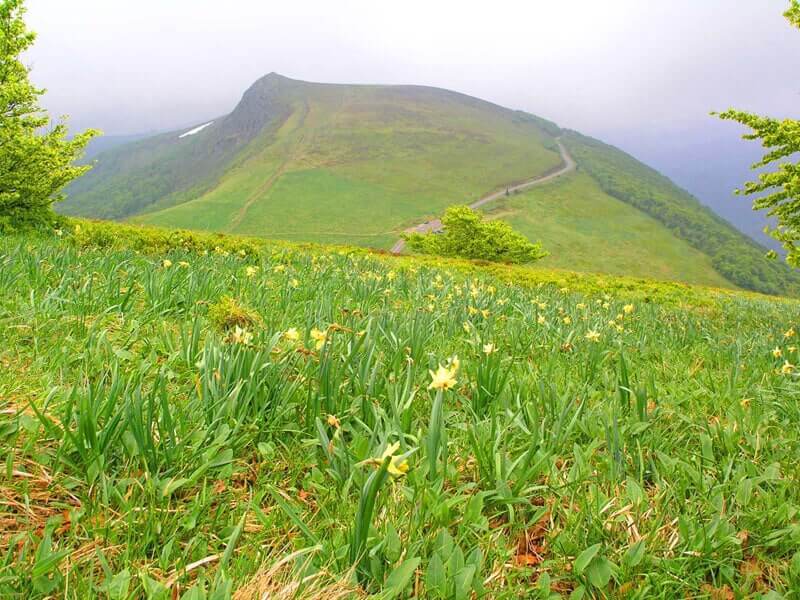 As for open scenery, drive up to the Col de la Schlucht and follow the Route des Crêtes garlanded in flower meadows and by clear weather panoramic views of the ‘Ballons’, the rounded summits of the Vosges, rising to 1424 metres. To the east you look down on the Rhine plain and Alsace where vineyards, medieval villages and castles may tempt you on a day trip but when you return to Gérardmer over the pass, be sure to sample a hearty meal in a traditional mountain farm.
As for open scenery, drive up to the Col de la Schlucht and follow the Route des Crêtes garlanded in flower meadows and by clear weather panoramic views of the ‘Ballons’, the rounded summits of the Vosges, rising to 1424 metres. To the east you look down on the Rhine plain and Alsace where vineyards, medieval villages and castles may tempt you on a day trip but when you return to Gérardmer over the pass, be sure to sample a hearty meal in a traditional mountain farm.
Gateway to the South
Like most holidaymakers, I often whizzed through the Drôme on my way south but last year I decided to stop for a while and explore this bucolic department on the left bank of the Rhône. I wandered in Valence, the leisurely capital and a delightful ‘town of art and history’, then headed for the hills beyond the river Isère. 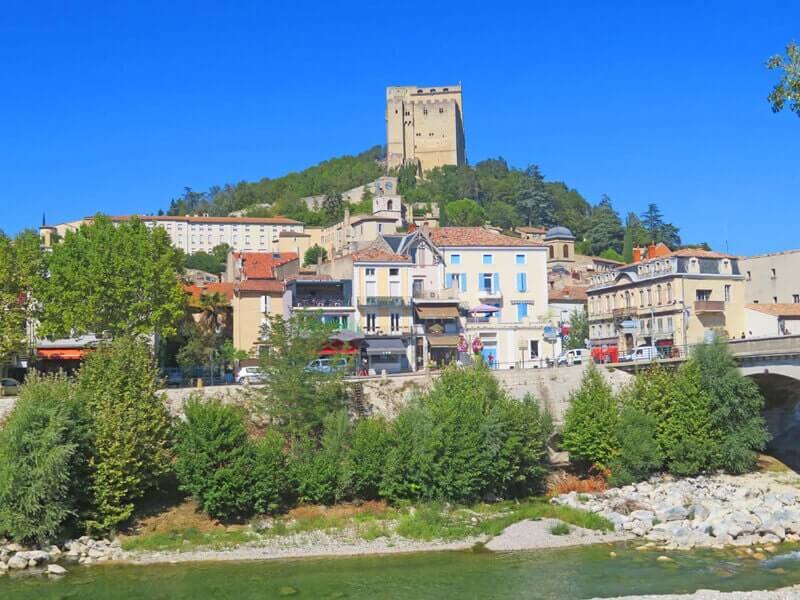 Quaint villages, organic fields, orchards, no tourists around until you reach the intriguing ‘Palace’ of Hautes-Rives, built by a postman, and the vineyards of Tain l’Hermitage, claiming the northernmost Côtes du Rhône on the steep surrounding slopes. The views up there are fabulous, red roofs, blue river, the Ardèche across the water, but back in the village, I indulged in the local Valrhona chocolate, favoured by top chefs all over the world. Wow!
Quaint villages, organic fields, orchards, no tourists around until you reach the intriguing ‘Palace’ of Hautes-Rives, built by a postman, and the vineyards of Tain l’Hermitage, claiming the northernmost Côtes du Rhône on the steep surrounding slopes. The views up there are fabulous, red roofs, blue river, the Ardèche across the water, but back in the village, I indulged in the local Valrhona chocolate, favoured by top chefs all over the world. Wow!
Meanwhile, south of Valence where the river Drôme joined the Rhône, I ventured up valley to climb the tallest medieval keep in France, in the sleepy village of Crest. I listened to history but up 257 steps, I fell in love with the mysterious Saou forest and the Peak of Three Beaks on the fringes of the dramatic Vercors, a natural ‘fortress’ in the pre-Alps. I couldn’t drive that far but only a stone throw away the Diois beckoned with Alpine scenery and a flavour of Provence in ancient villages.
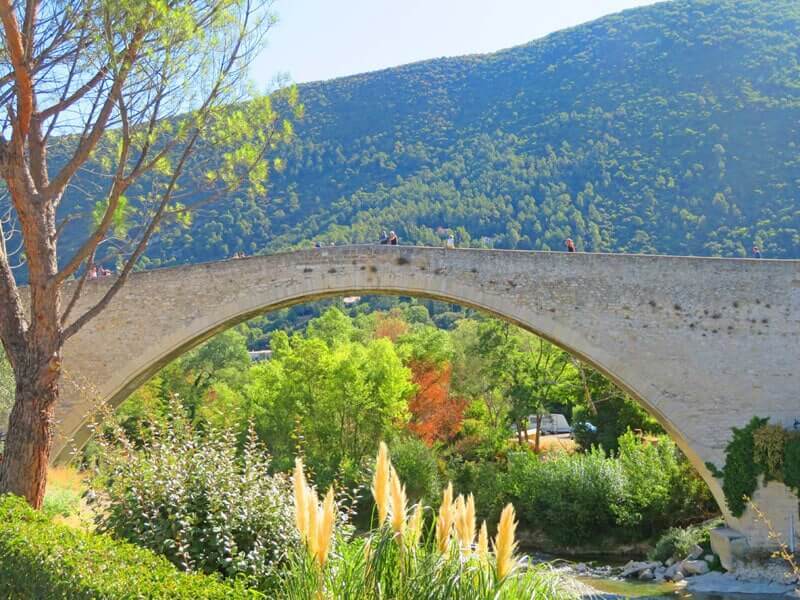 The next day, at the heart of the Drôme Provençale, I marvelled at vineyards, sunflower fields, lavender and olive groves. Crickets chirped after dusk as wild herbs released their scent in the garrigue, thyme, rosemary and more. Don’t miss the mini-Versailles in Grignan or Nyons, famous for its colourful market and medieval bridge, but beyond these popular spots, look out for hilltop villages, chapels and churches, and when you reach the Baronnies Nature Park, the pristine scenery will welcome you in a remote corner of paradise, superb for outdoor lovers.
The next day, at the heart of the Drôme Provençale, I marvelled at vineyards, sunflower fields, lavender and olive groves. Crickets chirped after dusk as wild herbs released their scent in the garrigue, thyme, rosemary and more. Don’t miss the mini-Versailles in Grignan or Nyons, famous for its colourful market and medieval bridge, but beyond these popular spots, look out for hilltop villages, chapels and churches, and when you reach the Baronnies Nature Park, the pristine scenery will welcome you in a remote corner of paradise, superb for outdoor lovers.
The Secret Minervois in Occitanie
Between the Black Mountain -the foothills of the Massif Central- and the Canal du Midi east of Carcassonne, this is the land of my dreams, lush orchards and vineyards dotted with authentic villages where the population rarely reaches 2000. Here’s Aigne and its concentric lanes leading to a pretty square, there Bize on the river Cesse, stone houses draped in ivy, 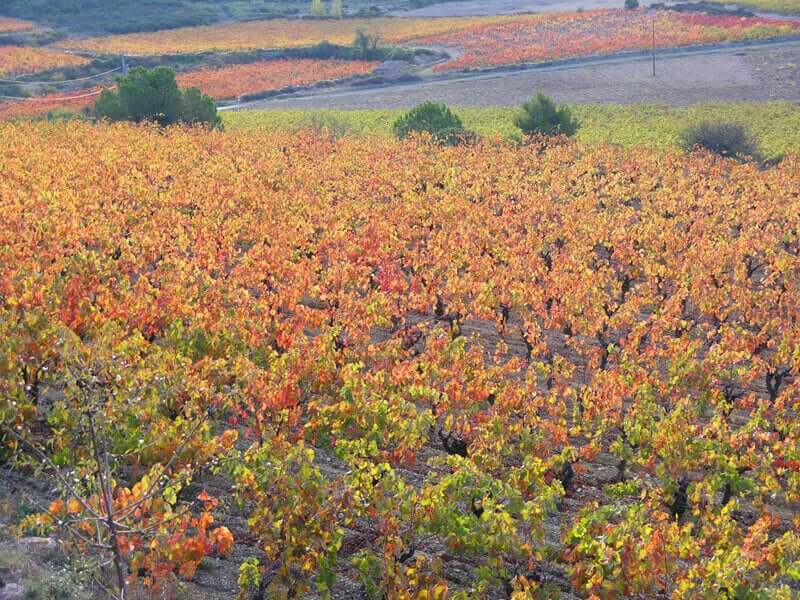 Rieux and its seven-sided church, Caunes-Minervois laced in medieval lanes and Renaissance hotels, graced by an impressive abbey and up on the slopes a Royal Quarry still yielding the beautiful red marble, once used in Versailles and the Paris Opera.
Rieux and its seven-sided church, Caunes-Minervois laced in medieval lanes and Renaissance hotels, graced by an impressive abbey and up on the slopes a Royal Quarry still yielding the beautiful red marble, once used in Versailles and the Paris Opera.
Few visitors stay in the Minervois, so it’s a secluded haven for artists, inspired by the luminous light and the ever-changing colours of vineyards across hills and plain. Today, Minervois has earned its badge of honour with AOC labels alongside organic wines and superior ‘Vins de Pays’.
History, culture? Minerve is a must, a ‘rocky sanctuary’ perched above the gorge of the River Cesse. In this seemingly inaccessible stronghold, medieval Cathars sought refuge against the Albigensian crusade but forced to surrender after a siege, many were burnt at the stake. 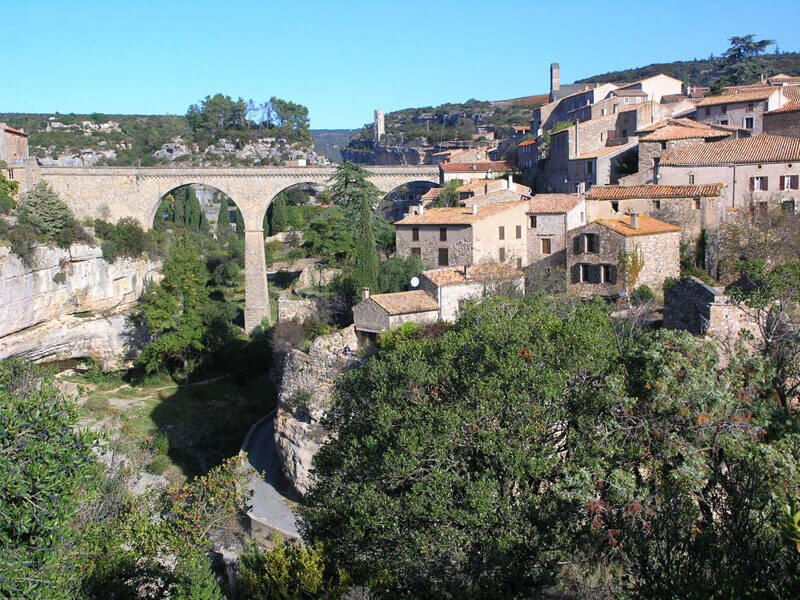 It is still a haunting place, though today a high bridge takes you to the village across the gorge (no cars except residents, 131 at last count). Stroll up the cobbled lanes, gaze at picture-postcard cottages peeping through hydrangea and pomegranates, then you’ll be bowled over by the view, the river far below rushing through the tunnels it carved in the rock, green land as far as you can see while above the village, the High Languedoc promises unspoilt scenery in a vast Nature Park. Wild plateaux, mountains, forests and heathland, menhirs, dolmens and 2000 species of plants, this is my get-away-from-it-all on the edge of Minervois.
It is still a haunting place, though today a high bridge takes you to the village across the gorge (no cars except residents, 131 at last count). Stroll up the cobbled lanes, gaze at picture-postcard cottages peeping through hydrangea and pomegranates, then you’ll be bowled over by the view, the river far below rushing through the tunnels it carved in the rock, green land as far as you can see while above the village, the High Languedoc promises unspoilt scenery in a vast Nature Park. Wild plateaux, mountains, forests and heathland, menhirs, dolmens and 2000 species of plants, this is my get-away-from-it-all on the edge of Minervois.

